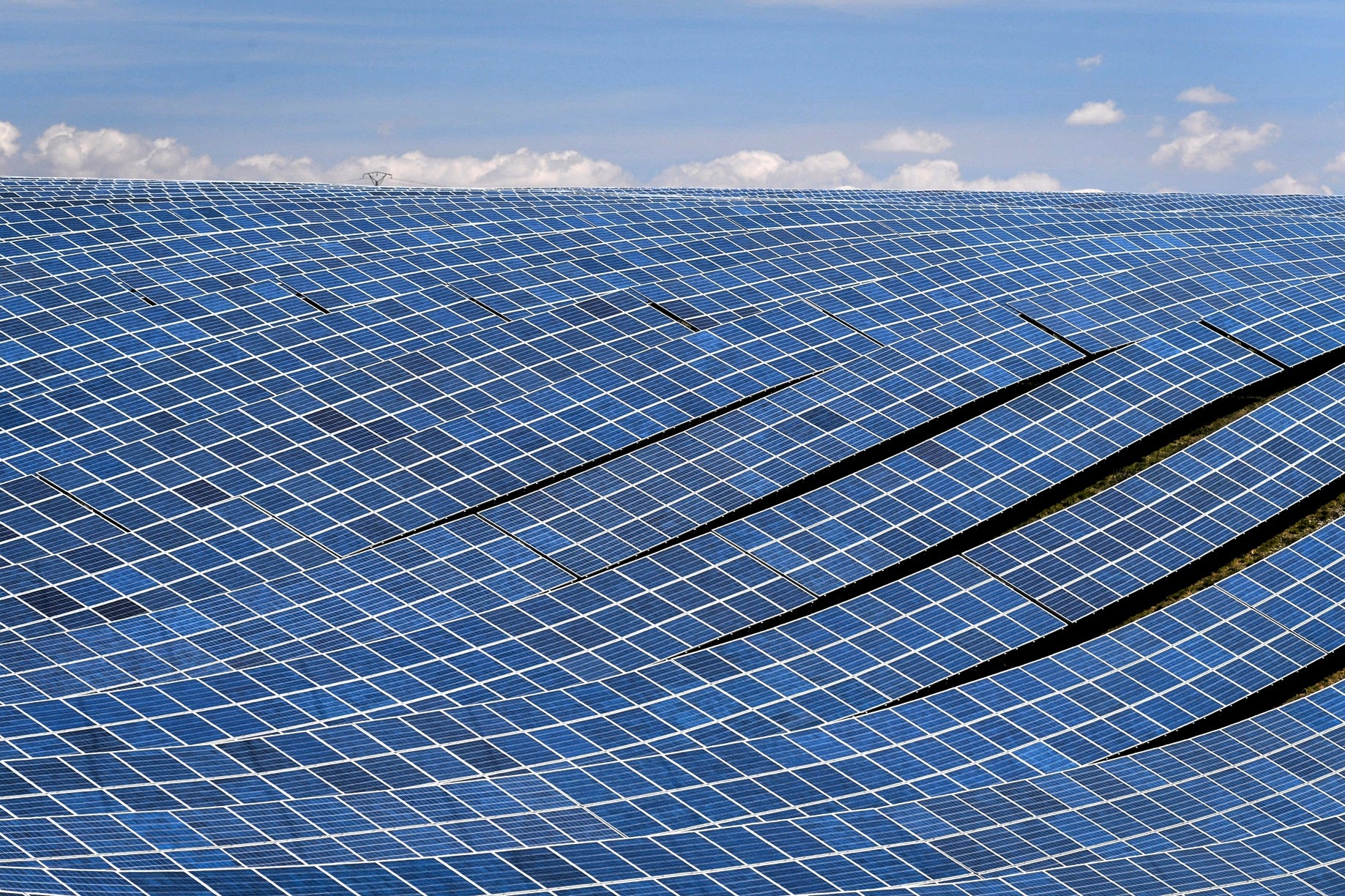Solar panel breakthrough promises record efficiency with new quantum material
Discovery could ‘redefine solar efficiency in the near future’, researchers say
Your support helps us to tell the story
This election is still a dead heat, according to most polls. In a fight with such wafer-thin margins, we need reporters on the ground talking to the people Trump and Harris are courting. Your support allows us to keep sending journalists to the story.
The Independent is trusted by 27 million Americans from across the entire political spectrum every month. Unlike many other quality news outlets, we choose not to lock you out of our reporting and analysis with paywalls. But quality journalism must still be paid for.
Help us keep bring these critical stories to light. Your support makes all the difference.
Scientists have discovered a new material that could radically improve the efficiency of next-generation solar panels.
A team from Lehigh University in the US developed a material capable of achieving an absorption efficiency rate of 190 per cent of the theoretical efficiency limit for traditional silicon-based solar cells.
“This work represents a significant leap forward in our understanding and development of sustainable energy solutions, highlighting innovative approaches that could redefine solar energy efficiency and accessibility in the near future,” said Chinedu Ekuma, a professor of physics at Lehigh University.

Tests of the material showed that it performed particularly well when absorbing infrared light and visible regions of the electromagnetic spectrum.
The material achieved an external quantum efficiency (EQE) of 190 per cent – an important method for measuring the efficiency of a solar cell. The EQE rate represents the generation of one electron for each photon absorbed from sunlight. Collecting more than one electron from one photon is possible with the new material, thus accounting for such a high EQE rate.
In order to achieve this, the new material takes advantage of something called the ‘van der Waals gaps’ – atomically small gaps between layered two-dimensional materials.
“Its rapid response and enhanced efficiency strongly indicate the potential of Cu-intercalated GeSe/SnS as a quantum material for use in advanced photovoltaic applications, offering an avenue for efficiency improvements in solar energy conversion,” said Professor Ekuma.
“It’s a promising candidate for the development of next-generation, high-efficient solar cells, which will play a crucial role in addressing global energy needs.”
Professor Ekuma and his team now plans to turn this experimental material into one that can be integrated into current renewable energy systems.
The research was detailed in a study, ‘Chemically tuned intermediate band states in atomically thin CuxGeSe/SnS quantum material for photovoltaic applications’, published in the journal Science Advances on Wednesday.

Join our commenting forum
Join thought-provoking conversations, follow other Independent readers and see their replies
Comments